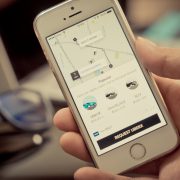What Uber Can Teach Us about Scarcity and Choice
Every so often, stories of outrageous surge pricing in the ridesharing industry make their way around the internet. As these stories typically go, a rider was shocked upon reaching their final destination to find that they were charged sometimes hundreds of dollars for a trip that might normally cost $20-30.
It is easy for most of us to sympathize with the furious consumer since no one likes to find large surprise charges on their bank statements. But as most people who use Uber know, these charges are actually consensual. And the entire surge pricing apparatus is actually a practical example to use when explaining scarcity and demand.
Since ridesharing is very much a spontaneous entity that allows drivers to drive only when they want to and not on a predetermined schedule, there are often instances where there are not enough vehicles on the road to keep up with the demand for rides.
When this happens, the ridesharing app of your choice, be it Uber, Lyft, or something else, will let you know what the rate of this surge pricing before finalizing your ride request. In fact, with Uber specifically, riders not only have to accept the surge pricing fare, they also have to manually type in the surge rate to signify that they understand that they will be paying significantly more than usual.
The problem comes in when these riders may not have paid close enough attention to what they have agreed to, much of this happens when the ride may be a bit intoxicated. But that mistake is not on the end of the ridesharing apps. In fact, this model, while frustrating for those who do not plan accordingly, is actually extremely helpful to understanding supply and demand.
Understanding Demand
Throughout the various schools of economic thought, there are few things on which most economist will agree. However, as an intro to economics class will teach you, the principle of supply and demand is usually universally agreed upon, even though it is often used to different ends.
Since Uber drivers are limited, when the demand for rides the surge pricing actually works in the consumer’s favor by incentivizing more Uber drivers to get out on the road. A driver who may not have wanted to leave home for a typical night’s earnings will suddenly have the financial motivation to get out and drive.
As the consumer, you are always in the proverbial driver seat. If you feel like the cost of a good or service does outweigh the benefit of arriving home at that exact moment, you can choose not to use a ridesharing service at all. Or, you can choose to wait out the surge pricing and see where it goes. Since Uber’s surge pricing is a direct response to consumer demand, sometimes riders are able to bypass these higher prices by waiting for the demand to lessen.
Additionally, users familiar with ridesharing understand that they will pay higher prices on busier nights when more people are out and drinking and in need of safe rides home. And by knowing this, they can plan accordingly and plan their rides around peak hours. Again, the consumer is the one that must initiate the final screen tap that confirms the ride, so it is ultimately their choice.
As economist Bob Murphy writes:
“So if people understand the principle of a certain ride having a market price of (say) $10 on a normal day, they shouldn’t balk at that “same ride” having a price of (say) $40 on a busy party night.”
And Uber has even grown accustomed to warning its users what days surge pricing may be coming and what times it is expected to occur. This is actually a huge convenience to the consumer as Murphy also explains:
“In this way, people could spread their ride demands out according to their willingness to pay: the people with flexible plans could make way for those who (say) had babysitters they needed to get home to by 1:00 a.m., or for those who really didn’t want to leave right at midnight and were willing to pay extra to leave at their preferred time.”
The Great Price Gouging Debate
This responsive pricing is the same we see happen during storms or other natural disasters. Price gouging, as it has come to be called, is usually condemned as immoral. Many supporters or government-controlled prices condemn the practice as many in vulnerable areas are told that if they want water they must pay significantly higher prices.
But what those who criticize “price gougers” they forget that this act incentivizes an increased supply, allowing more consumer needs to be met. If you are in an area where water will be scarce for an extended period of time, bottled water is essential. And since demand is increased, most businesses are unable to keep up, resulting in widespread shortages.
This means additional merchants will have to come in. And if it is a storm of great magnitude, many of these merchants are risking a great deal in bringing the product to these affected areas. By increasing the price of their water, they make it worth their risk while also ensuring that the supply of water is increased, making it available to more people.
But in this instance, many governments have been prone to putting restrictions on price gouging, which in many ways prevents people from getting water. Luckily with Uber, attempts at curbing their surge pricing mechanism have not been successful, though India’s government has banned the practice in 2016.
But just like with price gouging, government’s attempting to manipulate the price disincentivize demand and end up putting consumers at a disadvantage. And in the case of Uber, surge pricing allows more people the opportunity to get to where they want to go during the busiest times if they so choose.





